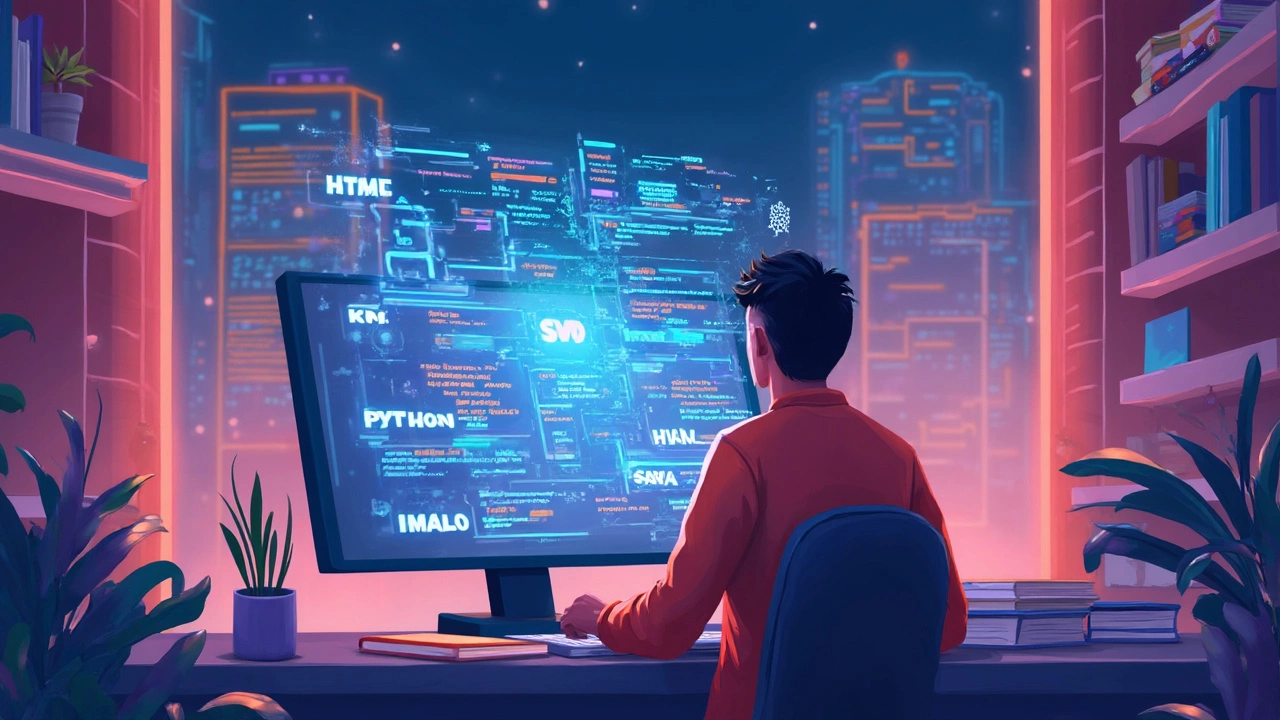Learn Code: Quick Start Guides for Absolute Beginners
If you’ve ever thought about learning to code but felt stuck, you’re not alone. Most people start with the fear that programming is only for geniuses. The truth is, you can pick up the basics in a few weeks with the right resources. This page pulls together the clearest, most practical advice from our articles, so you can jump straight into writing real code without endless theory.
Pick the Right Language First
Choosing a language that matches your goals makes learning smoother. For web basics, HTML and CSS are a must, and adding JavaScript lets you add interactivity. If you want to build apps quickly, Python is the go‑to because its syntax reads like plain English. Our "Easiest Coding Languages to Learn" guide breaks down the top five beginner‑friendly languages, showing you where each shines and how long it typically takes to feel comfortable.
Start with short projects: a personal webpage, a simple calculator, or a tiny game. Those mini‑wins build confidence and reveal how the language actually works in practice. Don’t rush through tutorials; try to code along line by line and tweak the examples. That hands‑on approach sticks far better than just watching videos.
Address Common Fears About Coding
Many wonder, "Is coding a hard job?" The answer depends on the role, but the entry barrier isn’t as high as it seems. Problems arise when you expect to know everything at once. Break tasks into small steps, use debugging tools, and search for solutions—developers do that every day. Our "Is Coding a Hard Job?" article explains the typical challenges and how to turn them into learning opportunities.
Another common worry is that you need a computer science degree. In reality, plenty of employers value proven skills over formal qualifications. Building a portfolio of small projects, contributing to open‑source, or earning an online certification can showcase your abilities just as well. The "Most Recognized Online Certifications" piece lists the credentials that actually matter in 2025.
Finally, keep your learning rhythm realistic. Spend 30‑45 minutes a day coding, review what you did, and set a tiny goal for the next session. Consistency beats marathon study sessions, and you’ll notice steady progress. Bookmark our "Easiest Coding Languages" and "Is Coding a Hard Job?" posts—they’re packed with actionable tips you can apply right now.
Ready to start? Grab a text editor, pick a language from our list, and follow the step‑by‑step tutorials. You’ll be surprised how quickly you can create something functional, and each finished piece will push you a little farther on the coding journey.
